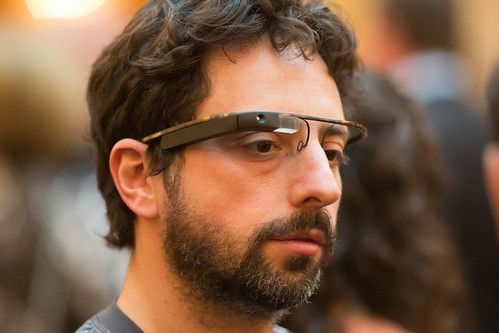This is a guest post! If you want to write for us, check out the Guest Post section.
Any discussion about Augmented Reality (AR) usually involves references to “The Terminator” or “Minority Report”. The interfaces in films like these rely on fictionalized overlays on the physical world. In reality, there’s actual AR tech, both in production and development, that eliminates the need for these clichéd references. The foremost among these is Google’s Project Glass.
Google Glass: What Is It?

An introductory video about Project Glass hit the web on the 4th of April 2012. Although the title–“Project Glass: One day…”– indicates that the tech isn’t close to ready, that didn’t stop viewers from assuming it should be made available ASAP. Unfortunately, Google Glass is largely hypothetical. Even with more recent leaks and PR stunts, like having Lieutenant Governor Gavin Newsom sport the specs this May, what Google Glass can actually do is mainly speculative.
The Google Glass system of vision-based overlays has no mainstream mechanism of delivery as of yet. Besides the futuristic interface, there aren’t any technical specifications on how the Google Glass system will even work, which contrasts with the AR gadgets currently in the production pipeline.
Here are some specifications of Google Glass:
- Glasses – Auto sensing glasses
- Processor – 0.8 GHz Cortex-A9
- Memory – 4GB NAND Flash, 1 GB RAM
- Connectivity – Bluetooth 4.0, WLAN 802.11 a/g/n
- Camera – 0.8 VGA face facing, 8 MP, 3264×2448 pixels, autofocus
- OS – Android OS, v2.3.4
- Sensors – Accelerometer, gyro, proximity, compass
- Sync – With Android Phones with NFC
AR Gadgets: An Overview
Important factors for workable AR gadgets include portability of individual devices, success at integrating into everyday fashion, and ergonomic performance.
Current AR devices attempt to capture these ideals by layering various data streams over users’ visual fields through HUDs contained in helmets and glasses. These devices stream information through a mix of geolocation and mapping data, biological feedback/reports, and real-time updates from transport systems, game systems and social media. AR that provides (or is aiming to engineer) variations of this AR telemetry include:
Military Applications
Defense Advanced Research Projects Agency (DARPA), the military organization instrumental in the creation of the internet, has recently commissioned Innovega to produce iOptik displays in the form of AR contact lenses/glasses. The lenses will provide soldiers with the ability to track, analyse and control mission and training parameters, as well as aid in their overall awareness of variable combat conditions. The lenses, which are slated for production in late 2014, will likely be suitable for enhanced gaming as well.
Commercial Products
Like the iOptik lens, commercial applications of AR wearable tech can contribute substantially to gaming advancements. Examples of AR gaming products currently available for purchase are Sensics SmartGoggles, which provide a helmet-based immersive entertainment system, and the Wi-Fi enabled Golden-i headset, which contains a head tracker, computer processor, and SD port.
Another area that benefits greatly from wearable AR is the health industry. Two available products that don’t involve a digital headgear are Jawbone’s exercise monitor called Up, and Nike’s feedback bracelet called FuelBand. Still another AR athletics monitor by Omega is currently in development and will come in the headset format.
AR in a Nutshell: Conceptual Fad or Future Reality?
Wearable AR is an area that is undergoing rapid growth, with a number of companies attempting to corner the market. Some, like Google, are still grappling with prototypes, but others have products on the shelves, waiting to be the next revolution in augmented reality. No doubt some of these imagined AR devices will make it to the production line, whereas some will be lost to a dearth of funding or design complexity; ultimately, users will adopt the tech that’s most functional, performs seamlessly and adds definite value to their life.
Author Bio:
Alyse is a marketing, photography, and tech addict who spends her time investigating the next generation of technology. When she is not brushing up on her art of the scientific know how in the world, you can find her contributing to ATTSavings.com or on Twitter @Alyse_1.
{ 2 comments… read them below or add one }
This brings my imagination into reality. It will be a great device if it actually materialized. Aside from its cool features and impressive quality, I love the design as well. I won’t be surprise seeing a lot of people wearing it in the future.
I am very much awaiting this product. I know however, it will be not as good as it is being projected.